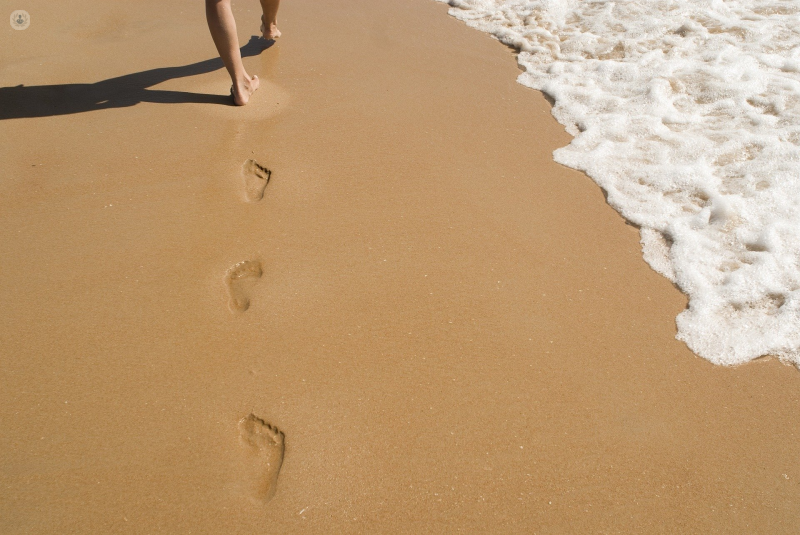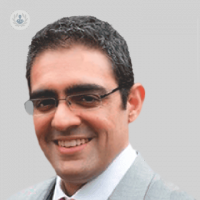Cavus foot: how to treat high-arched feet
Written by:The arch of your foot is the area along the bottom of your foot in between the ball and the heel. This space is made up of three distinct arches that form a triangle, consisting of bones, tendons and ligaments. Some people tend to have higher than usual arches, known as cavus foot which, unfortunately, not only causes pain but can lead to further medical problems.
Mr Adam Ajis is a highly-experienced consultant with a specialist interest in the treatment of foot and ankle disorders. In this article, he discusses what cavus foot is, the problems it can lead to and what treatments he can offer.

What is cavus foot?
Cavus foot is a condition in which a foot has a higher than normal arch. Due to excessive amounts of weight placed on the heel and the ball of the foot, it is often associated with the heel tilting inwards and the toes developing a claw-like deformity. It can develop in one or even both feet and at any age.
What causes cavus foot?
Sometimes, but not always, this can be caused by underlying neurological disorders or medical conditions - such as cerebral palsy or spina bifida - that result in an imbalance of the muscles around the lower leg, ankle and foot. In other cases, it can simply be caused by an inherited structural abnormality.
What problems can it cause?
Over time, the stronger muscles overcome the weaker ones resulting in the foot turning inwards towards the other foot, the arch becoming more pronounced and the toes becoming clawed.
Additionally, because of the abnormal shape of the foot, the way it responds to loading can cause problems. Patients may complain of heel pain, forefoot pain, toe pain and pain over the outside border of the foot. If left for long periods, arthritic changes in the joints of the foot and ankle can develop and deformities can change from being flexible to becoming fixed.
What can be done about cavus foot?
The first stage in treating this foot deformity would be to try corrective insoles. They can help control how the foot responds to loading and help correct the deformity if the foot is flexible. If insoles no longer work, then altering the shape of the foot surgically can be done.
What does surgery consist of?
Often changes to the shape of the heel bone can be done using minimally invasive techniques to correct the shape and position of the toes and lower the arch by changing the shape of the metatarsal bones. This procedure involves cutting into the bone and will require metal plates and screws to hold things together while healing occurs. There is often a period of non-weight bearing involved while the bones heal.
If you are interested in receiving treatment for cavus foot, book a consultation with Mr Adam Ajis via his Top Doctors profile and discuss the various treatments available to you.


